|
#memoriesat60 #missingcommunity #gratitude
When I moved to Billings in 1993, I was 8 months pregnant, missing my women's circle in Portland and desperate to make some connections here before I became more home bound with an infant. I was so very lucky, in two ways. We had found a last minute child care/preschool spot for our 4-year old son at the Montessori School. When I reached out to its directress Nancy Jo (what an amazing human), she suggested I call one of the other mothers, Carolyn Ostby, to whom I am forever grateful for the ensuing outpouring of woman spirit. Carolyn reached out to one of her friends, Robin Taylor, who immediately responded that their circle wanted to come to our home, with their daughters, to provide comfort, encouragement and to do a belly casting. As soon as they arrived, I was enfolded into their warmth and friendliness. My heart is still warmed as I remember the looks of awe on the faces of the daughters as they placed plaster wrappings around my belly. They created an altar with that cast - a permanent recording of my glorious roundness - with things they brought with them, with their well wishes and with the necklace that my Portland women's circle had started for me - a kind of rosary made of beads given to me by them and sent to me by far flung family and friends. I wore this during labor, fingering each bead and remembering their love and support and that of these new women and girls in my life. In our tiny cul-de-sac, lived two good-hearted women, Mary McCarvel Helgeson and Shelley McBride. Mary put together a baby shower with some of the wives of my husband's coworkers - again, women I didn't know well, but who responded with a beautiful generosity of spirit. Mary and Shelley, not only had boys with which our son could play, but were the best kind of neighbors and with them, we created a sweet, if rambunctious, life together... welcoming our new daughter - the only girl among the, now seven, neighbor kids - sharing holidays, making up celebrations, watching out for each other and our families. I treasure those unexpected and touching gifts of community, these lovely beginnings of my life here in Montana. And ... I look forward to the end of the Covid-19 crisis, when such gatherings can start up again.
0 Comments
#memoriesat60
Though these 11-pages are mostly filled with with the likes of: " I was born at Akron City Hospital .. A month and a half later, we moved to Anniston, AL so Daddy could be in the Army... my favorite activity was reading..." A few more detailed memories stood out to me at that point in my life: After 1st grade, we drove from Houston to Florida. My brother and I were very excited to catch horseshoe crabs. They were so weird. We threw them into the trunk before we left for home so we could show our friends. Half-way there, Daddy asked "what is that smell?" He had to stop the car so my mom could throw up. I was both excited and disappointed when my youngest brother was born, because I wanted a sister. My grandmother told me that if I had a sister I wouldn't get as many handmade clothes from her. I decided that was important and talked about my little brother every day at school. In 3rd grade, I had a boyfriend named Lee Carter. I knew he was my boyfriend because we would talk at recess. In 4th grade, I sold enough boxes of Russell Stover candy for Camp Fire Girls that I was rewarded with two weeks of resident camp in northern Georgia. I loved the horses, hated Spam, short-sheeted our counselor's bed, and didn't miss my parents one bit. I also learned to play the ukulele at camp. We used our bed sheets to dress up in togas, played the hukilau song and hula danced to it, which earned us beads because Camp Fire traditions were based on Indian lore. (?!) One of my 5th grade teachers was new at teaching. She invited all of the girls in our class over for a sleepover at her apartment. We were all good until she went into her room to sleep. We began a seance, which made several of the girls scream really loud and wake up the neighbors. Our teacher wasn't as happy in the morning. That teacher was the one who made us write autobiographies. She gave me a "very good!" and complimented me on dotting the 'i" in my signature with a flower. #memoriesat60
Excited Zygote Theory: Suburban Atlanta late 1960s My comfort, peace, and happiness, while being surrounded by the folks at the #forfreedomscon in LA a few weeks ago, brought back these connected snippets ... Sly and the Family Stone performance of "Thank You Falettinme Be Mice Elf" on the new, to Atlanta, Soul Train. Was it the song's message, Sly’s moves, smile or his red jumpsuit that found my 11 year old self blurting out "I think I want to marry that man!"? It wasn't the first time that my southern-raised mother muttered, "where DID you come from?" A group of young adults sitting on the ground, singing songs, playing guitars, wearing long strands of beads, smiling in Lennox Square. I paused, intrigued by their energy and spirit and was handed a newspaper with a psychedelic butterfly on its cover, causing my soul to respond with an 11 year old version of "these are my people!" My mother grabbed my hand, returned the newspaper to the the group and repeated her question about my origin. The seeds of my transition to long hair, beads, Indian print tops, bell bottoms, taking up the ukulele and guitar and learning freedom songs had been planted. My sociology professor later shared, jokingly, a theory: When the stork is flying around with its load of zygotes, some of the fertilized ovum are so excited that they jump out prematurely, landing in the wrong womb and, thus, wrong family. Though my mother, as many mothers then, struggled to understand me or my pre-adult passions, I am grateful for the places, including large cities, my father’s job took us, my ancestresses, the tough yet open-hearted survivors, and, that this milieu engendered in me a happiness when in the midst of a rich mosaic of voices, stories, generosity, kindness, and soulful conversations. #memoriesat60
Happy VD4U I have previously reflected on the challenges for me of living in Fort Worth in the late 80s. Other than the joy of giving birth to my son, one of my top distractions was meeting and hanging with Renee Sherrer, who was working on her MFA at North Texas State in Denton. I was not yet into making art - this was my public relations and marketing for non-profits phase - but what Renee was doing with fabric and postcard art and female identity combined with her endearing quirkiness, made me want to make the trip north as often as I could. One night we danced so wildly to Brave Combo's nuclear polka that I flew right off the raised floor, ending up several feet below with a sprained ankle - upside? the bartender installed me with a bucket of ice at the end of the bar and people bought me shots. downside? the effect of all those shots realized too late. When her program was completed, she asked if I would be interested in helping her move to Montana, a state that had never been on my radar. It sounded like an epic road trip, but ... I couldn't get off work. After a couple more years in Cowtown and a few in a quite different city, Portland, Oregon, Steve and I moved to Billings in 1993. I had lost contact with Renee and she wasn't on our minds when we happened to walk into Cafe Jones (currently Ebon Coffee). On the walls were a few oversized brassiere prints. Steve and I simultaneously exclaimed "Renee!" And, she was there, next door in her office above the current Montana Gallery (then a book store). She, and her cup and saucer embellished art car, did not stay in Billings long. But, this unexpected reunion set a sweet tone to our new city, underscoring how, despite moves and travels and changes, life can provide interesting reconnections as it weaves forward. Renee talked about SirQ and he was credited with many of the photos in her postcard art. I have since been told he still lives in Billings. After 26+ years here, I have never run into him. But their postcards remain in my collection. This last image is from her MFA show "Designer Straight Jackets." #memoriesat60 #communityengagedart
Softness Overcoming Hardness Angela Davis, Keynote Speaker #OpenEngagement Conference, Oakland May 1st, International Worker's Day, 2016 [Angela starts at 11:30, this video is long, but so good, so settle in, it's Angela Davis! and it includes Q&A at the end] #AngelaDavis starts with the recognition that we were on the colonized land of the Ohlone, that the Oakland area is the foundation of the #BlackPanthers movement (50 years hence), home of #Occupy, #BlackLivesMatter, #transgender movements, #restorativejustice, #foodsovereignty and so much more. The title of this conference, which focuses on #sociallyengagedart, was Power (with the palpable and obvious subtext of privilege). It was necessarily uncomfortable and and educational and expanding and connecting. Angela adds, of course, Power ... To The People. She talks about artists who have been inspired by the Black Power movement and how this inspired others to make art and make change. How art plays a pivotal role in changing the consciousness and drives of those who can change the world. Art does, indeed, change the status quo. To my delight, she talks about #DollarBrand and #AbdullahIbrahim, to whose music I was introduced in the 80s, (yes, in retrospect I see the colonial connection) when I was helping friends renovate a 1700s home in Long Swamp, PA and we spent our late nights listening to their eclectic music collection. Abdullah’s music remains soulful to me today, particularly, "Soweto" (link in comments). She talked about the importance of softness in overcoming hardness, that softness is a place of reflection, imagination, and possibility. That we must continue to move. #memoriesat60 #communityengagedart
Creating Space for Dialogue Conflict Kitchen I am finishing up my home-made baba ganouj this morning and reflecting on the thought-provoking, conversation-inducing presentation (and delicious Palestinian food) by the staff (the director is Jewish) of @conflictkitchen during the Open Engagement Conference in Pittsburgh in 2015. We talked about how important it is to keep dialogue open between people, even if governments and organizations find it politically incorrect. And how the sharing of food during can assist in these conversations, such as the meals the Half the Sky: Intersections of Social Practice Art delegates shared as we discussed, processed and problem-solved our time and interactions in China.[Mido Lee, Rosemary Meza DesPlas, Christine Giancola, Priscilla Otani and I presented a panel at Open Engagement, "Considerations and Challenges: Socially-Engaged Art in China" about our Half the Sky project in Shenyang in 2014.] "Conflict Kitchen is a restaurant that only serves cuisine from countries with which the United States is in conflict. Each Conflict Kitchen iteration is augmented by events, performances, publications, and discussions that seek to expand the engagement the public has with the culture, politics, and issues at stake within the focus region. The restaurant rotates identities in relation to current geopolitical events.... These diverse perspectives reflect a nuanced range of thought within each country and serves to instigate questioning, conversation, and debate with our customers." https://www.conflictkitchen.org/ Photo courtesy of conflict kitchen website #memoriesat60 #communityengagedart
FLOW: Interactive Exhibition and Community Project Northcutt Steele Gallery, Montana State University Billings, January 28 - March 18, 2016 It began with a big, but, initially, manageable goal, given our backgrounds - to bring more people into the gallery and to engage them across departments, across the city and between the two institutes of higher education in Billings around the theme of water issues and focused on the Yellowstone River. Early on, we consulted MSU Billings' long-range plans, goals, & strategies and ... Leanne K. Gilbertson, Ph.D of Art History and Nothcutt Steele Gallery Director at MSU Billings and me, an artist curator with a passion for community engagement, were soon neck deep in conversations with potential partners, who were enthusiastic and willing to sign on. The gallery was set up as a laboratory and nexus for exploration and dialogue with an exhibition of my Grottoes - mixed media wall sculptures with video meditations on water - and juried works by students and alumni. We commissioned two students, Bonny Beth Luhman and Ariel Rebecca Grosfield, to create an animated short about river users. Art Ed students discussed water issues with the Girl Scouts, Boys & Girls and other K-8 students, who then made 5 x 7 panels with their responses. Presentation of research by Rocky Mountain College students. Precious McKenzie, teacher of English at Rocky Mountain College, donated her water-themed children's books to the MSU Billings library, which became the anchor for pre-school readings there. Poetry and jazz students held a water-themed reading and improvisation night. Northern Plains Resource Council and Eric Warren presented his film "Mixing Oil and Water" featuring conversations about oil & gas development along the river. Dr. Susan Gilbertz offered a course for students from both campus about the findings from the Yellowstone River Cultural Inventory, which was part of the 16 year, most comprehensive study in the world on a watershed, our Yellowstone River, which was the basis for our keynote symposium, which included Dr. Gilbertz' students, some of the key scientists of that study (Warren Kellogg, Burt Williams and Kayhan Ostovar) as well as a beautiful argument for personhood rights for rivers by Carrie La Seur. The amount of creativity and information shared and the community of collaborators, brainstormers, participants and supporters was a heart-warming overlay and reward for the intensity of coordination: Gerard Baker, Sue Beug, Karin Eilertsen Calabrese, Reno Charette, Michelle Dyk, Teresa Erickson, Megan Fetters, Samantha Finch, Leanne Gilbertson, Ph.D, Susan Gilbertz, Ph.D, Ilene Goddard, Ariel Grossfield, Tami Haaland, Ruby Hahn, Joy Crissey Honea, Hannah Hostetter, Warren Kellogg, Luke Kestner, Korilynn Kessler, Carrie La Seur, Ph.D, J.D., Jodi Lightner, Bonny Beth Luhman, Larry Mayer, Precious McKenzie, Joel Miller, Patrick Mueller, Kelsey Nix, Carolyn Ostby, Kayhan Ostovar, Mara Pierce, Ph.D., Megan Poulette, Tabetha Rindahl, Brent Roberts, John J. Roberts, Maria Selvig, Stephanie Slavin, Rebecca Summers, Peter Pete Tolton, Patricia Vettel-Becker, Ph.D., Eric Warren, Burt Williams, Patrick Williams, Dylan Woods and so many more who came to share their thoughts, listen and expand the dialogue around water issues, rights, access and conservation in our region. Project overview page with links to further details at https://www.sherricornett.com/flow-interactive-exhibition-and-community-project.html #memoriesat60
The Ya-Yas Have Arrived a tailgater + hot cars + a mall cop + a premiere + a jointly admired book + ebullient women An organic seeding of an invitation and desire for frivolity lead us to gather in the parking lot of Rimrock Mall to be silly, to pre-game, to pose, and … just as we began to wonder if we were a bit over the top, the mall cop arrived with his small flashing light, warning us to be “appropriate” and yet … his official capacity wilted under the attention of all of our boas and neon pink and brilliant red womanhood. By the time we entered the theater, the only seats together were in the front rows and we heard murmurs of “the Ya-Yas have arrived!” Thank you to #thebillingsgazette and my husband and daughter for witnessing and documenting and to Rebecca Wells for writing “Divine Secrets of the Ya-Ya Sisterhood.” #CommunityEngagedArt #interracialharmony
Judy Baca Inspiration and Motivation ... Taking my community-engaged work to the next level, with a generosity of spirit .... that is what I came away with after having breakfast with Judy Baca after the Women's Caucus for Art's Honoring Women's Rights conference and exhibition at the National Steinbeck Center in 2012. As the founder of the first City of Los Angeles Mural Program in 1974, which evolved into a community arts organization known as the Social and Public Art Resource Center (SPARC), she is best known for "The Great Wall of Los Angeles" which was "tattooed along a flood control channel in the San Fernando Valley and employed over 400 at risk youth and their families from diverse social and economic backgrounds working with artists, oral historians, ethnologists, scholars, and hundreds of community members. The Great Wall depicts a mile long multi-cultural history of California from pre-history through the 1950’s." "Underlying all of Baca and SPARC’S activities is the profound conviction that the voices of disenfranchised communities need to be heard and that the preservation of a vital commons is critical to a healthy civil society." Her other projects include: The World Wall: A Vision of the Future Without Fear - "in addition to being able to imagine nuclear destruction, we must also be able to imagine peace," Tiny Ripples of Hope / Seeing Through Other’s Eyes (2010) - about the optimism–and hope–that surrounded Robert Kennedy’s pursuits #memoriesat60
A Debacle of Bangs Inevitably, the night before picture day, my mother would cut my hair. As I have often noted, sitting still was not my strong suit. But, as the last photo in this series demonstrates, she was not one to give up easily. #memoriesat60
The Messiness, Democracy and Hope of Civil Society The 64th Annual United Nations DPI/NGO Conference: Sustainable Societies, Responsive Citizens Bonn, Germany, 3-5 September 2011 Priscilla Otani, president-elect for our Women's Caucus for Art, and I attended as representatives of our NGO. Here is part of my report: The happy sounds of many languages filled the six floors of the Maritim Hotel atrium as the conference began. At the Opening Ceremony, I found myself surrounded by businesswomen from China, people in niqab, saris, and caftans, youth, and many nuns (Catholic, Buddhist, Hindi) some of the representatives of more than 400 NGOs in attendance. We quickly coalesced into the "we the peoples" that starts the Charter of the United Nations. Preamble to the Charter of the United Nations. I soon had a sense of both the messiness and wonder of civil society and how years of UN conferences have distilled a method for collecting the varied perspectives, views and recommendations asked for, in this case, by the General Assembly in preparation for the Rio+20 Conference on Sustainable Development scheduled for June 2012 in Brazil. At each of the Roundtables, to which all were invited, high-level experts spoke on the topics after which respondents from government reflected back or challenged them on their thoughts. Four to five questions at a time were then taken from the audience and the panel responded. UN staff recorded each of these discussions. The same process, minus the respondents, occurred in the many workshops. Side events gave even more intimate discussion opportunities as did the exhibits, both of which WCA was a part. UN Conference board members worked tirelessly throughout the three days to add to, edit and condense all of this information into the final declaration that reflected the expectations of NGO participants and civil society leaders for the governments attending Rio+20. The declaration was openly discussed for a final time at the closing. Individuals were able to come to the mike, ask for word changes, minor deletions and additions, before the assembly was asked, by show of applause, to accept or reject the declaration before it was given to the German government for presentation to the U.N. General Assembly. We need to TEACH PEOPLE FLEXIBILITY - how they can do best with current knowledge and how to change as new information arises, how to deal with a tomorrow that is so different from today without getting lost and fearful. We no longer have TIME to polarize. We need to end cynicism. We need to celebrate courage and innovation. Felix Dodds, Chair, 64th DPI/NGO Conference - "THE FUTURE IS NOT A GIFT, it is an achievement. The future does not belong to those who are content with today or to those who lack the courage to force change that is needed." Everyone needs to mobilize, volunteer and take action. At closing ceremony, Flavia Pansieri, Head of the Consultative Forum of the Heads of UN Agencies in Germany, asked everyone who has engaged in a cause without expectation of payment to stand - 100% stood. The spirit of VOLUNTARISM in participants from developing and developed countries alike was huge. "Of course we volunteer, why wouldn't we do our part for the future of the world." Not everything is worse. Many positive accomplishments are not picked up by the world's media. The eco village concept - conscious design for long-term sustainability and resilience - is rapidly expanding with over 600 established eco villages around the world and 100+ in the U.S. The country of Senegal is committing a large portion of its budget to transforming struggling traditional villages into ecovillages. Here is the story about Senegal's eco villages Fair Trade Towns - communities in which people and organizations use their everyday choices to increase sales of Fairtrade products and bring about positive change for farmers and workers in developing countries - are also expanding with over 1000 internationally and 23 in the U.S. as of April. http://www.fairtradetowns.org To combat the serious lack of drinking water in areas of western China, the Water Cellars for Mothers Project developed and built water collecting devices, each holding a year's worth of rain water for one family. Over 1 million people benefited from this project in 2010 Water Cellars for Mothers Project #womenscaucusforart #memoriesat60
Dancemakers Through a modern dance class at University of Houston, Sharon and I became quick and dear friends. She introduced me to the Dancemakers - a dance group, founded by Rebecca Clearman, that met on Sunday mornings to step out of our other lives (I was in middle of taking way too many hours in order to finish my PoliSci degree) and to create joyful, beautiful, meditative flow through contact improvisation. Occasionally, we organized enough to perform around town. The 1983 Houston Festival performance was certainly our apex ... sharing with the audience the vulnerability, fun, trust, strength and the give and take supporting of each other in unchoreographed, yet magically cohesive, movement. During our final piece, with songs from Michael Jackson's 1982 Thriller album, we invited the audience on stage for a high energy, celebration of music and dance, bringing folks together in all of their forms of expression. #memoriesat60
The Shack I don’t know why I am wearing these ridiculous waders, because I don’t fish, much less go wade fishing, but this was taken at our family’s fishing shack (see other photo) which both sets of grandparents built on an oyster reef off the coast of Port O’Connor, Texas, on the northern edge of the Arkansas Pass Wildlife Refuge (where the whooping cranes winter!) in the late 1960s. I have referred to the shack as our extended family’s spiritual center, in that multiple generations would gather here, overflowing the one room onto the porch, where I preferred to sleep due to the loud, collective snoring of the elders inside on the bunkbeds. Grandpa Junker would take his pocket knife out to the reef and slurp oysters straight from their shells. My brother was into shark fishing (Steve can tell the story about the boat being drug around the bay most of the night by a huge hammerhead before it snapped off the line). When the fisher folks were tired, we would boat out around the reefs and channels to the barrier islands to play in the waves and hunt for shells, most often being the only humans on the beach. After a morning of fishing for reds and sea trout, my grandmothers would return, empty the crab traps and spend seemingly hours picking the meat from their tiny claws, which was then stuffed into flounder, which were caught when they came up into the shallows at night. There was no electricity or running water, so days begin and ended with the sun, somewhat extended by gas lanterns. Not everyone in our family enjoyed being there, for various reasons, but my favorite time was dusk, when the birds began their evening songs and the sun set across the water ... glorious abalone colors. And, over the years, I read and wrote and sketched and let my eyes soften, taking in the bay views from that porch, protected from the sun and cooled by the breezes.   Back to the photo ... This was the late 80s. I am wearing one of the original Whole Foods t-shirts from their first store in Austin. Steve is wearing a dog training whistle, so our lab puppy must have been with us. It was a moment of silliness. Steve used this photo in his medical school graduation publication with the simple words “gone fishin’ “ #memoriesat60 or lack there of... #captionthis
All I know is that my brother and I were #freerangekids, that lack of supervision lead to many adventures, that this was the Cornett farm, that our expressions make me think we were being apprised of a certain ill-advised behavior and that there is a good probability that a dirty and unhappy barn cat is squirming just out of sight, inside that wash basin #memoriesat60
Repairing Homes in Central Appalachia My first lessons, in the ever-evolving lessons, of acceptance of people where they are, just as they are, came from my Grandmother Cornett when I was very young, particularly when she asked me, as a five year old, to help with her Head Start class. I don't recall that I was much help, but I do remember basking in the love she spread throughout the room. As a 14 year old, this was underscored by the mentors and leaders in what would become multi-summer, spiritual and educational experiences for me, responding to requests from families, living deep in the hollows of the mountains, to work with them, to find donated materials in order to help to repair and to make safe their homes. On a practical level, I learned to roof, to tear up floors, to tear down and build new outhouses, to build a simple bridge, to raise money to replace a coal-laced well, a sole source of drinking water for one of the families and ... the beginnings of a fascination with using power tools. On a soul level, I was shown the importance of recognizing cultural, social and economic barriers and the importance of continually self-reflecting to avoid patronizing or "savior" actions or words of pity and the joy of connecting with the families in mutually respectful ways. While the parents might be initially hesitant to engage in conversation, the children were the reliable welcomers ... their curiosity, their eagerness to learn and to show their treasures, to help out, whether it be making caulking "worms" for me as I replaced window panes and then taking on the painting of the frames or hammering nails or taking a break with us to play keep away or taking my hand to show me flowers behind the house or asking me to read a book. And then the conversations with the elders, who shared their stories - one grandfather showed me how to hunt for ginseng in the woods - and who asked about ours. My guitar became another ice-breaker, as we shared songs back and forth, songs like Will the Circle Be Unbroken or Simple Gifts or Pass it On or If I Had a Hammer, songs about hope and love and community and trying to do the right thing ... I was happy to share one of these summers with each of my friends Amy Ettinger Burkett and Katy McCormick. These experiences were formative and I continue to be grateful for their influence on how I navigate the world and the big and continuing and sometimes difficult and embarrassing lessons about self-editing, about letting go of outdated ideas, and about being open to learning new ones that might change the way I look at the world as a whole or how I interact with others. |
AuthorA place to decant my brain, to capture inspiration and share fresh insights. [Posts from 2015 onward] Categories
All
Archives
November 2020
|

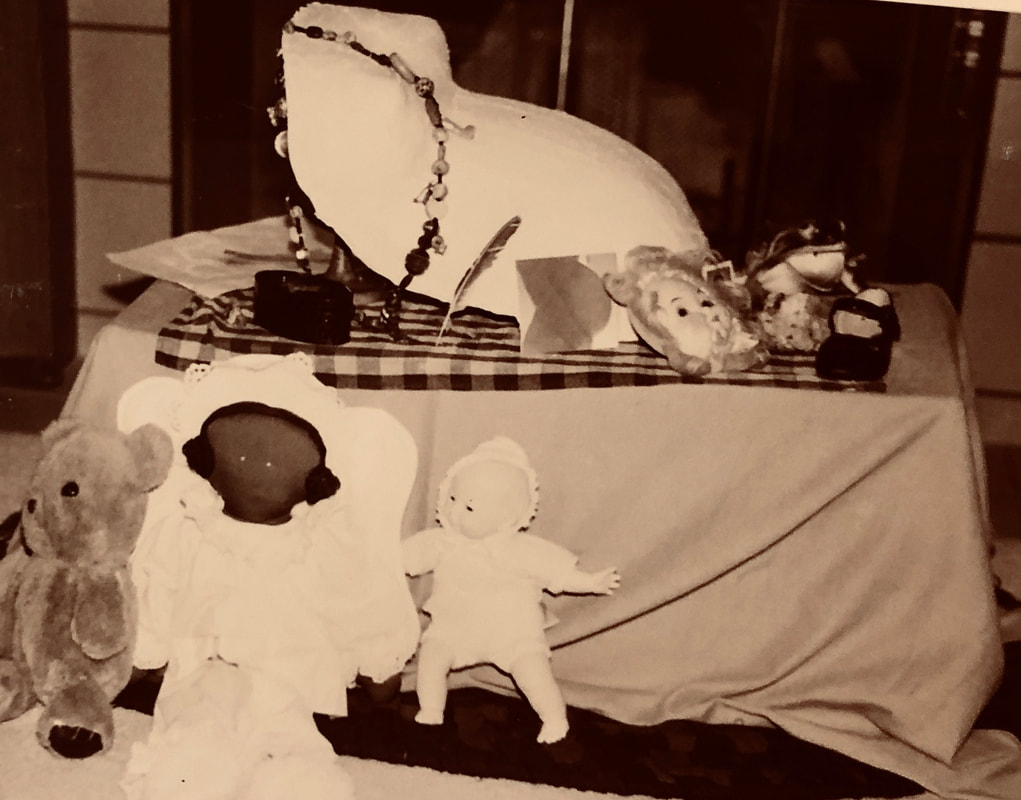
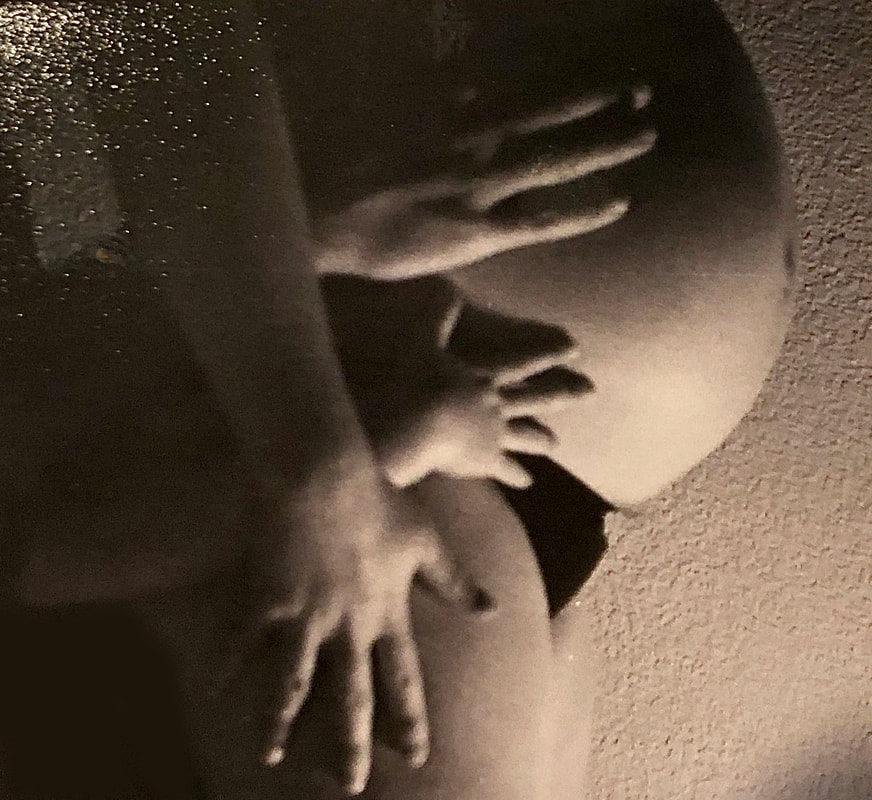
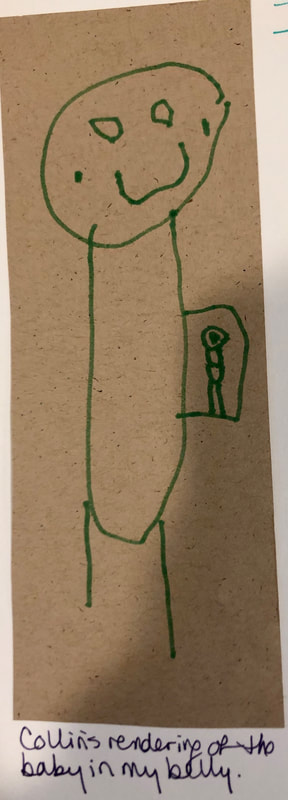
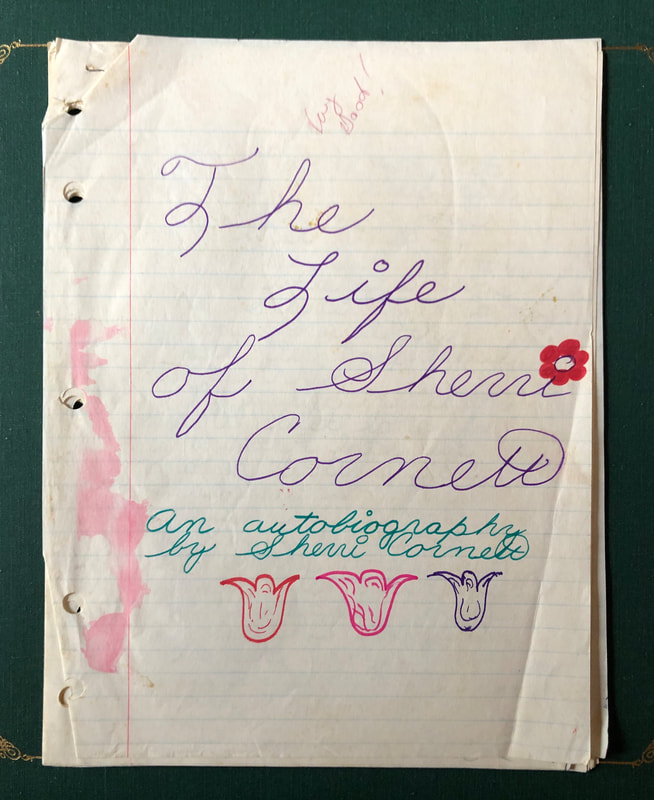
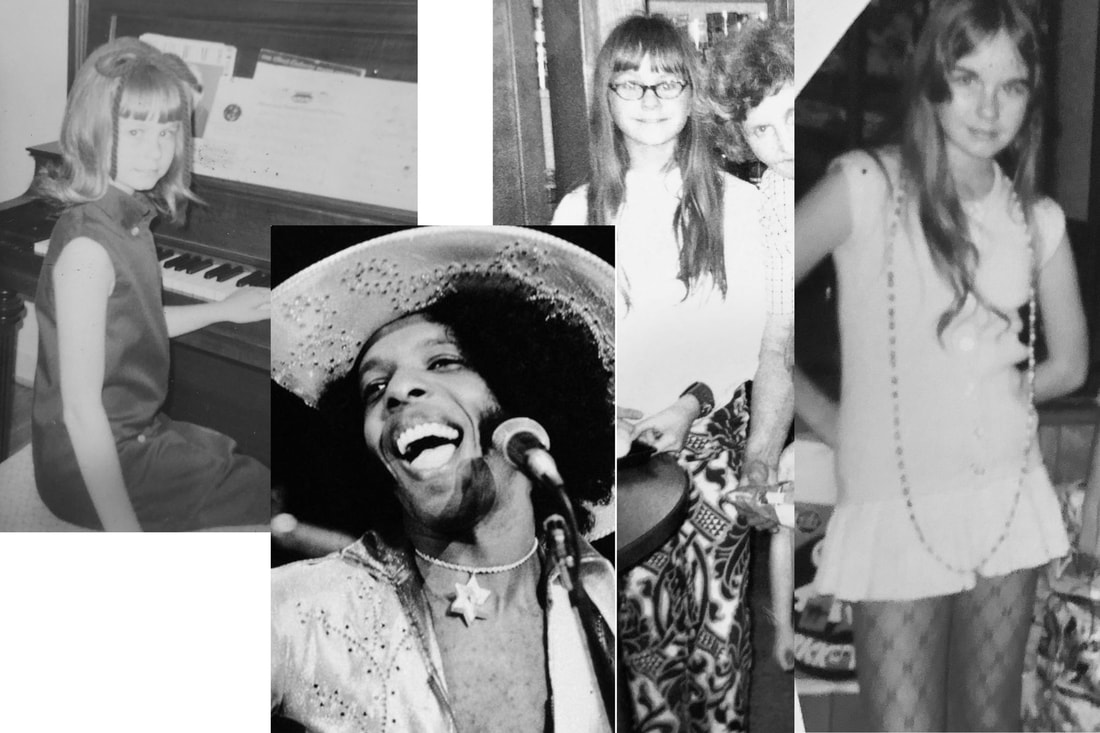
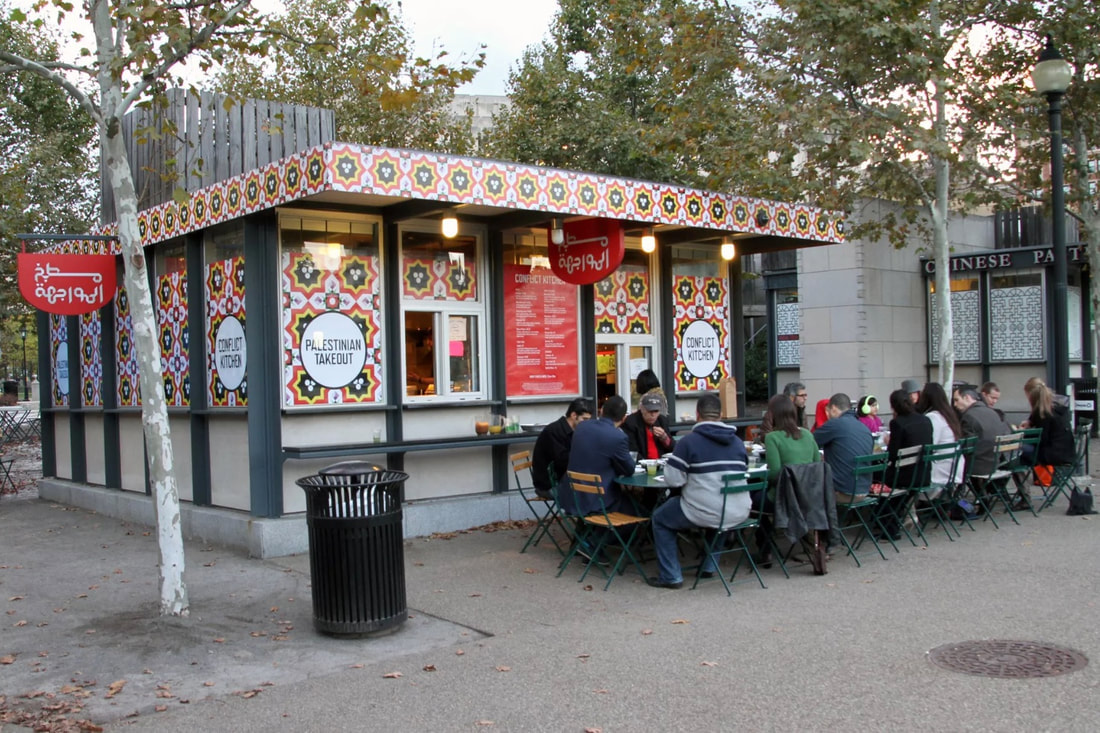
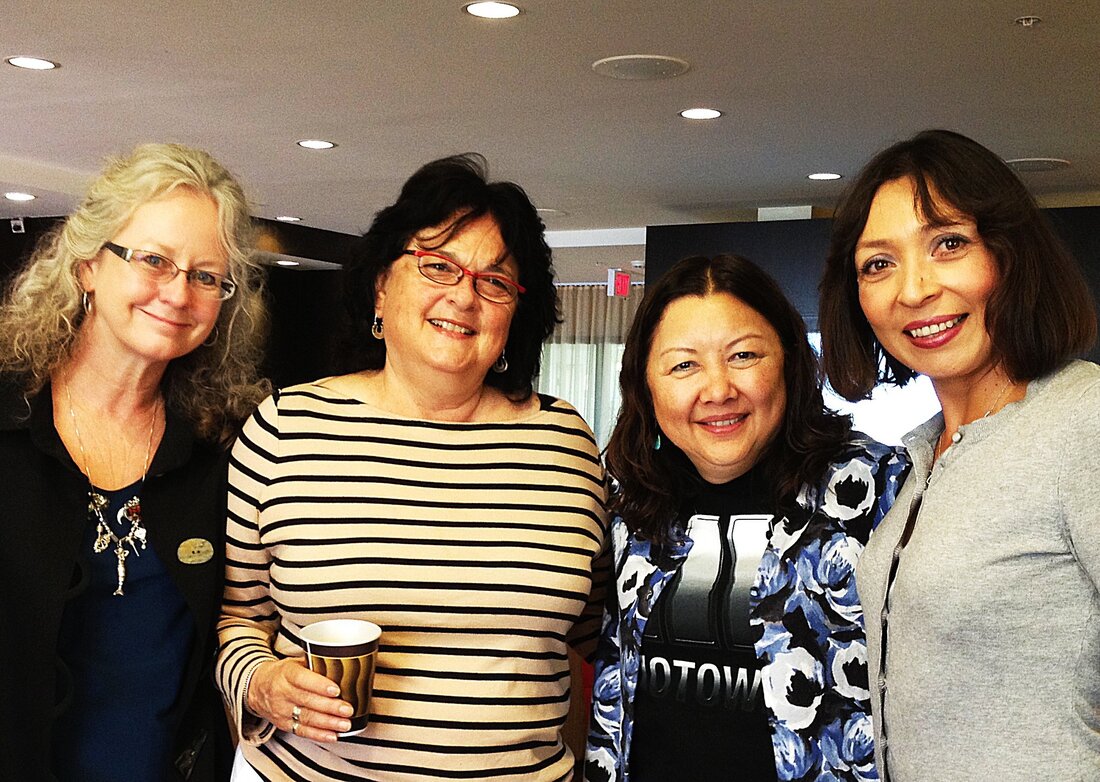
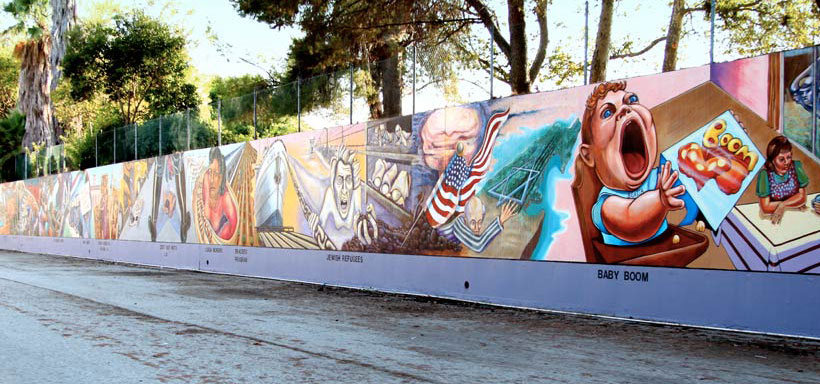
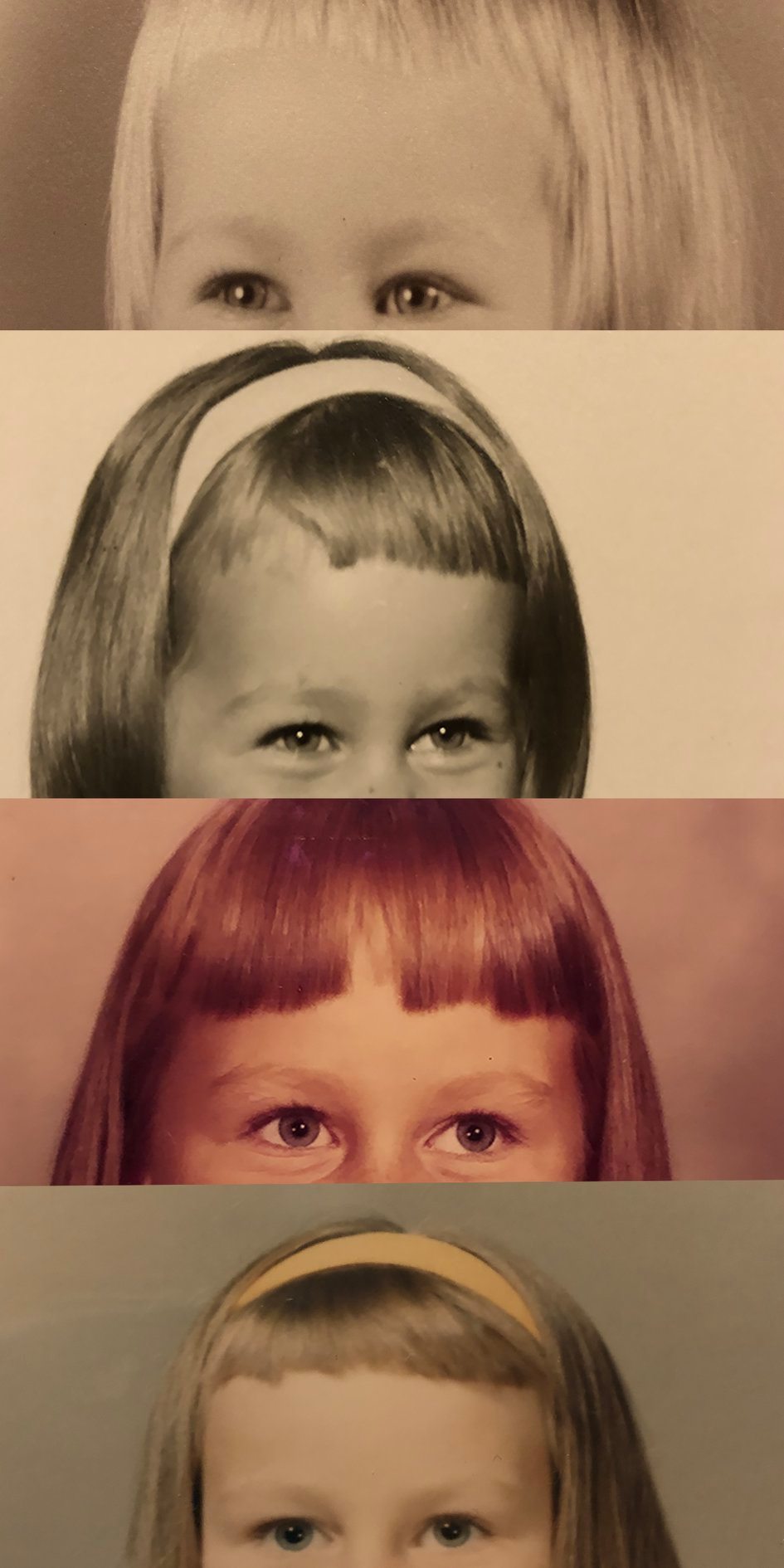
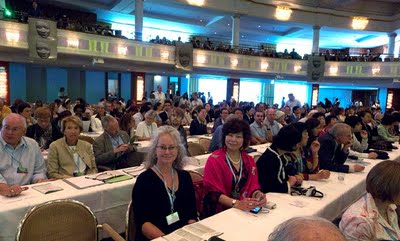
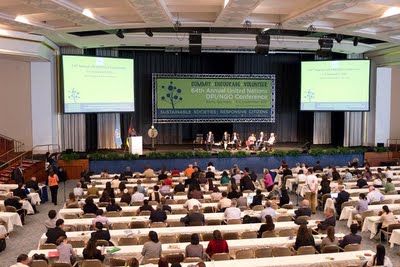
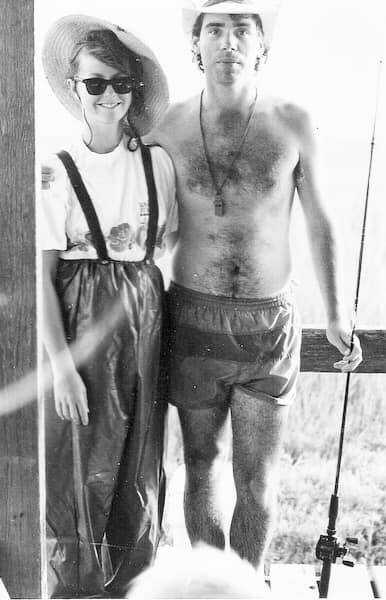

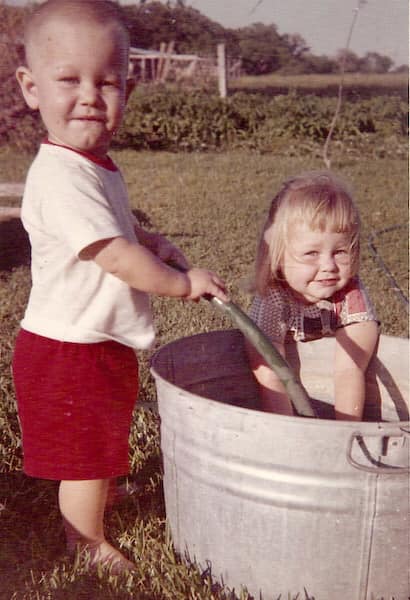
 RSS Feed
RSS Feed